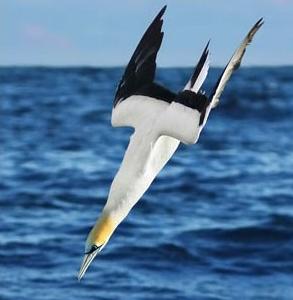
As I have done for the last four years (2016, 2015, 2014, 2013), here’s another retrospective list of the top 20 influential conservation papers of 2017 as assessed by experts in F1000 Prime.
- More than 75 percent decline over 27 years in total flying insect biomass in protected areas — … document[s] the devastating loss of flying insects in Germany … show[ing] that total flying insect biomass has been reduced by three quarters during the last three decades, irrespective of habitat type, weather variation, and the protected status of their sampling sites … (see also related blog post on CB.com)
- Decline in global oceanic oxygen content during the past five decades — … report a decline [in oceanic oxygen content] over several decades in almost all ocean basins … consistent with what is anticipated from anthropogenic global warming. Far-reaching implications for biogeochemical cycles, ecosystem function, and fisheries are foreseen …
- Soil networks become more connected and take up more carbon as nature restoration progresses — … This study … showed that shifts in the composition, network structure, and connectivity of soil food webs can alter the rates of … important ecosystem processes …
- Applying network theory to prioritize multispecies habitat networks that are robust to climate and land-use change — … an excellent example of how to integrate multiple data sets and future uncertainty into conservation planning around a major urban area …
- An Amazonian rainforest and its fragments as a laboratory of global change — Essential reading for all habitat fragmentation readers … (see also related blog post on CB.com)
- Oil exposure disrupts early life-history stages of coral reef fishes via behavioural impairments — … shows that environmentally relevant concentrations of polycyclic aromatic hydrocarbons … from oil pollution can have severe effects on the behavior of larval coral reef fishes …
- Annual mass drownings of the Serengeti wildebeest migration influence nutrient cycling and storage in the Mara River — … one of the more fascinating (and extreme) examples of nutrient flux across ecosystem boundaries connecting terrestrial and aquatic systems …
- When predators help prey adapt and persist in a changing environment — … a quantitative genetics framework to show that predation can help a prey population adapt more rapidly to a changing environment …
- Planetary boundaries for a blue planet — … vertical mixing and ocean circulation patterns can be considered another set of core planetary boundaries …
- Adaptation of phytoplankton to a decade of experimental warming linked to increased photosynthesis — … highlights the importance of considering the adaptive abilities of species when predicting future impacts on climate change on communities and ecosystems …
- Biodiversity effects in the wild are common and as strong as key drivers of productivity — … the message is clear, if we value the life support services provided by nature, we should protect species in their native habitats …
- Fatal attraction? Intraguild facilitation and suppression among predators — … apex predators may provide a net benefit on other species of the predator guild at local spatial scales …
- Feeding ecology and morphology make a bamboo specialist vulnerable to climate change — … illustrates the importance of understanding periods of resource scarcity in illuminating mechanisms underlying future declines …
- Higher predation risk for insect prey at low latitudes and elevations — … reveals a strong effect of latitude and elevation on predation risk …
- Widely used marine seismic survey air gun operations negatively impact zooplankton — … one of the first studies on the negative impact of seismic surveys on zooplankton …
- Potential relocation of climatic environments suggests high rates of climate displacement within the North American protection network — … the majority of protected areas of North America are likely to experience significant changes in climate …
- Environmental impacts of food consumption by dogs and cats — … a considerable, hitherto largely neglected or underestimated role of pets in terms of carbon footprint, etc. …
- Green environment and incident depression in South Africa: a geospatial analysis and mental health implications in a resource-limited setting — … while people in poverty may still benefit from green space, the struggle for the basics of food, shelter, and security may be of much more importance to wellbeing …
- Eutrophication will increase during the 21st century as a result of precipitation changes — … explains how changing precipitation patterns will in turn increase nitrogen runoff in some areas of the United States …
- Landscape simplification weakens the association between terrestrial producer and consumer diversity in Europe — Species richness is being lost in many landscapes … the loss of species richness is indicating even greater negative impacts of humans on ecosystems than we previously thought, because species richness is one of the later biodiversity measures that declines …
—
CJA Bradshaw

